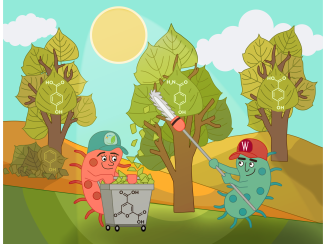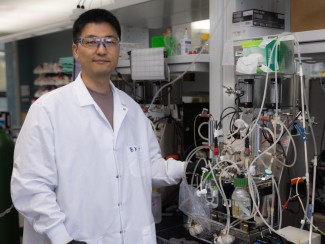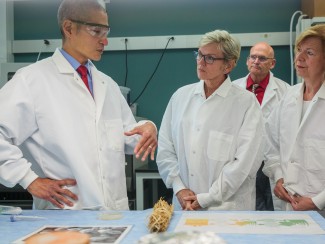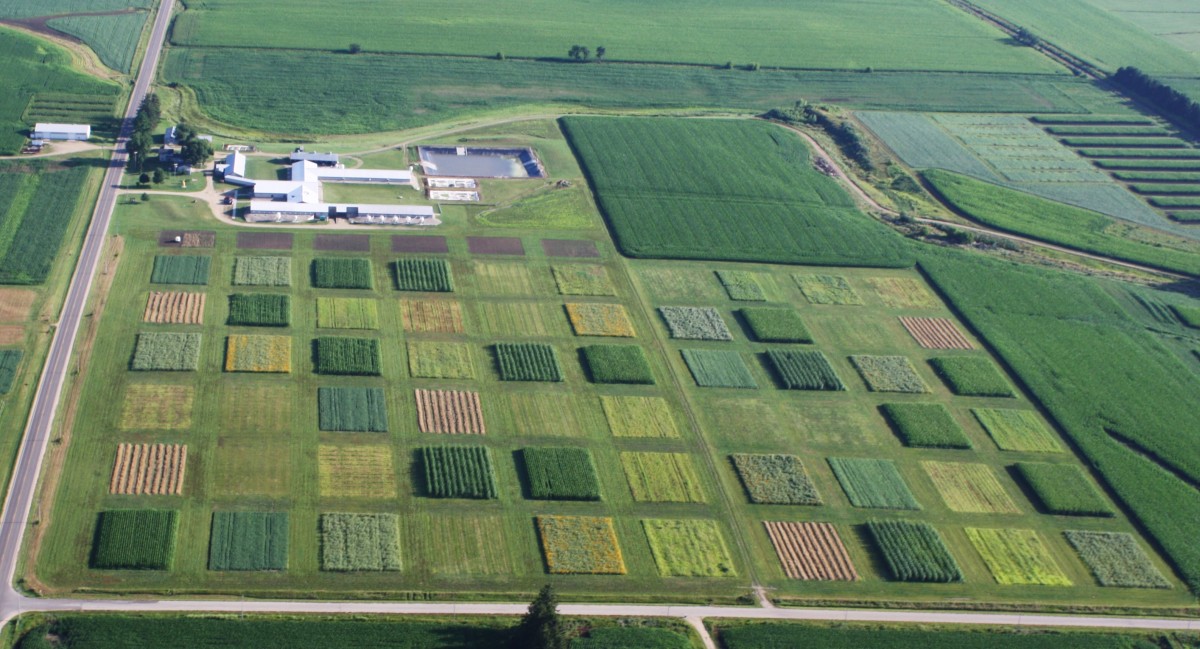
Researchers at the Great Lakes Bioenergy Research Center (GLBRC) recently published a study showing that quality of crop yield is less important than quantity when harvesting for cellulosic biofuels. The finding is the latest in a ten-year GLBRC field study assessing the sustainability of cellulosic, or non-grain, biofuel crops, and could help make cellulosic biofuels a viable alternative to petroleum-derived fuels.
GLBRC plants and sustainability scientist Gregg Sanford led the project, which investigated whether the quality of a bioenergy crop affects fuel yields after its conversion. Conducted in south central Wisconsin and southwest Michigan, the study analyzed sugar concentrations and ethanol yield of perennial crops such as switchgrass, giant miscanthus, and hybrid poplar and compared them to corn stover, an annual crop.
“We did an analysis of the quality of each biomass in terms of how much sugar each feedstock would yield per gram of biomass,” says Sanford. “We saw that the feedstocks did differ in their quality but ultimately that quality didn’t matter much when it came to yield per hectare. It was really the biomass yield that was driving ethanol yields.”
In other words, the kind of crop used is less important than the amount of it that can be harvested. The study also suggests that perennial crops could be equally useful contributors to cellulosic biofuel production.
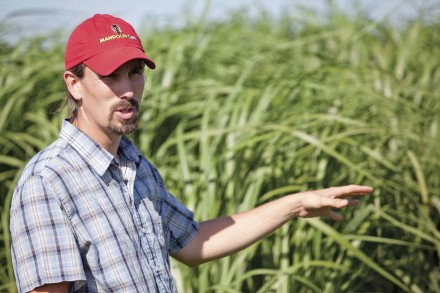
Though there is currently no economic infrastructure to support the production of perennial bioenergy crops, Sanford says they tolerate stressful agricultural conditions much better than annual crops and can be very beneficial to the surrounding ecosystem, making them especially fit for use in marginal, or non-agricultural, lands.
“Diversified perennial crops can provide a tremendous amount of ecosystem services like reducing greenhouse gas emissions, providing habitat for wildlife, and potentially building soil carbon,” says Sanford. “In addition, on marginal lands, many of them are more productive than corn. There are landscape configurations where the ecosystem services of these crops can’t be underestimated. Planting perennial bioenergy crops, particularly on marginal lands where they are more productive than corn, could go a long way in providing ecosystem services that first-generation bioenergy systems do not provide.”
Sanford is also excited to see how the future of the bioenergy crop landscape will evolve, saying, “it’s rewarding to feel like the results have real-world implications in terms of what we do moving forward with biomass development for energy, whether our priority is simply breeding for yield or if we need to figure out more efficient processing techniques so that the quality does actually matter more in terms of our end product,” says Sanford.
GLBRC is one of three bioenergy research centers established in 2007 by the Biological and Environmental Research program in the U.S. Department of Energy’s (DOE) Office of Science. GLBRC’s goal is to conduct transformational research and build the foundation of new cellulosic biofuels technology. For more information, visit www.glbrc.org or visit us on twitter @glbioenergy.

